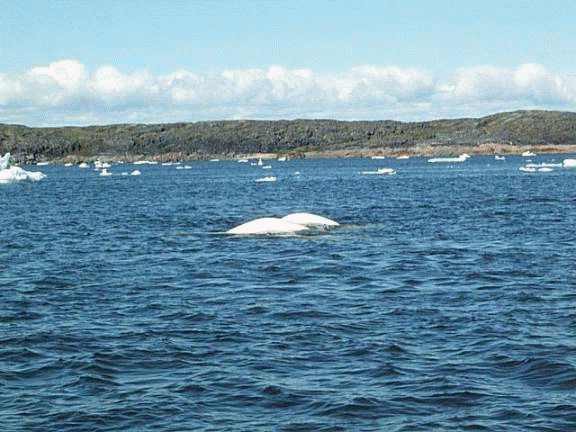
News
Breakthrough technology brings air traffic surveillance to Hudson Bay
 Jan. 26, 2009, Ottawa – With the first flight over Hudson Bay using new
air-traffic-surveillance technology, an 850,000-square-kilometre gap in
Canada’s radar coverage has been eliminated.
Jan. 26, 2009, Ottawa – With the first flight over Hudson Bay using new
air-traffic-surveillance technology, an 850,000-square-kilometre gap in
Canada’s radar coverage has been eliminated.
January 26, 2009 By Carey Fredericks
 Jan. 26, 2009, Ottawa – With the first flight over Hudson Bay using new air-traffic-surveillance technology, an 850,000-square-kilometre gap in Canada’s radar coverage has been eliminated, NAV CANADA announced last week.
Jan. 26, 2009, Ottawa – With the first flight over Hudson Bay using new air-traffic-surveillance technology, an 850,000-square-kilometre gap in Canada’s radar coverage has been eliminated, NAV CANADA announced last week.
The breakthrough technology is known as Automatic Dependent Surveillance – Broadcast (ADS-B). It combines satellite links, onboard equipment, ground stations, and communication links to provide air traffic controllers the same kind of information provided by radar.
ADS-B promises more efficient use of Hudson Bay airspace for some 35,000 flights a year, with significant savings in fuel costs, flight times and greenhouse-gas emissions.
On January 15, the first use of ADS-B involved Air New Zealand Flight 1 (ANZ 1) and air traffic controller Karim Mekki at the Montreal Area Control Centre (ACC).
The flight had departed from London, England enroute to Los Angeles, California. Mekki tracked the aircraft on his display for about 25 minutes as it flew over Hudson Bay.
“ADS-B is based on equipment on board the aircraft that tells us the exact position of the plane” says Rudy Kellar, Vice President, Operations at NAV CANADA. “It’s the surveillance system of the future because it’s more accurate than radar and much more affordable. ADS-B makes it possible for us to significantly improve service in remote locations like Hudson Bay.”
The new surveillance system provides radar-like coverage for a fraction of the purchase, installation and maintenance costs. Sensis Corporation is supplying NAV CANADA with its ADS-B equipment consisting of an antenna, a receiver and a target processor installed at ground stations along the Hudson Bay shoreline.
The stations are connected to telecommunications links that send data to controllers at Area Control Centres. The technology is digital, solid state, with no moving parts and a minimal support infrastructure.
To use ADS-B airspace, aircraft need to be equipped with the proper avionics. Air operators require Transport Canada approval before NAV CANADA can accept their down-linked
ADS-B data.
For aircraft using ADS-B airspace, cost savings are based on maximizing airspace capacity and efficiency through reduced separation standards that allow aircraft to climb to optimal altitudes much earlier, and to follow more efficient routes to destination.
NAV CANADA estimates customer savings of about 18 million litres of fuel per year and reduced C02 equivalent emissions of 50,000 tonnes per year, once all aircraft using this airspace are equipped for ADS-B.
More savings are expected in the next few years for North Atlantic traffic as NAV CANADA expands its ADS-B coverage over the eastern coast of Canada and parts of Greenland. Selection and preparation of sites is already underway.
NAV CANADA, the country’s civil air navigation services provider, is a private sector, non-share capital corporation financed through publicly-traded debt. With operations coast to coast, NAV CANADA provides air traffic control, flight information, weather briefings, aeronautical information services, airport advisory services and electronic aids to navigation.